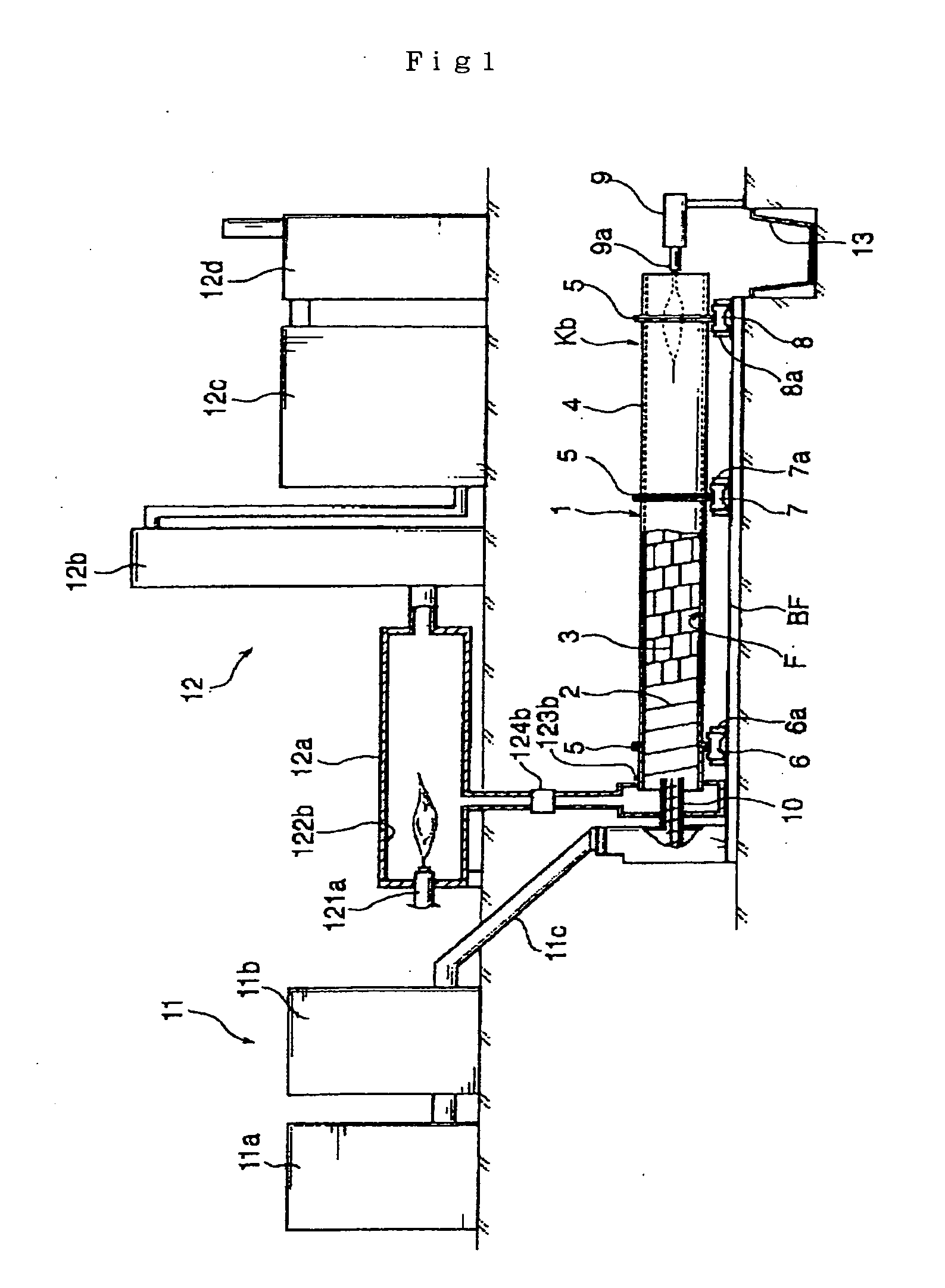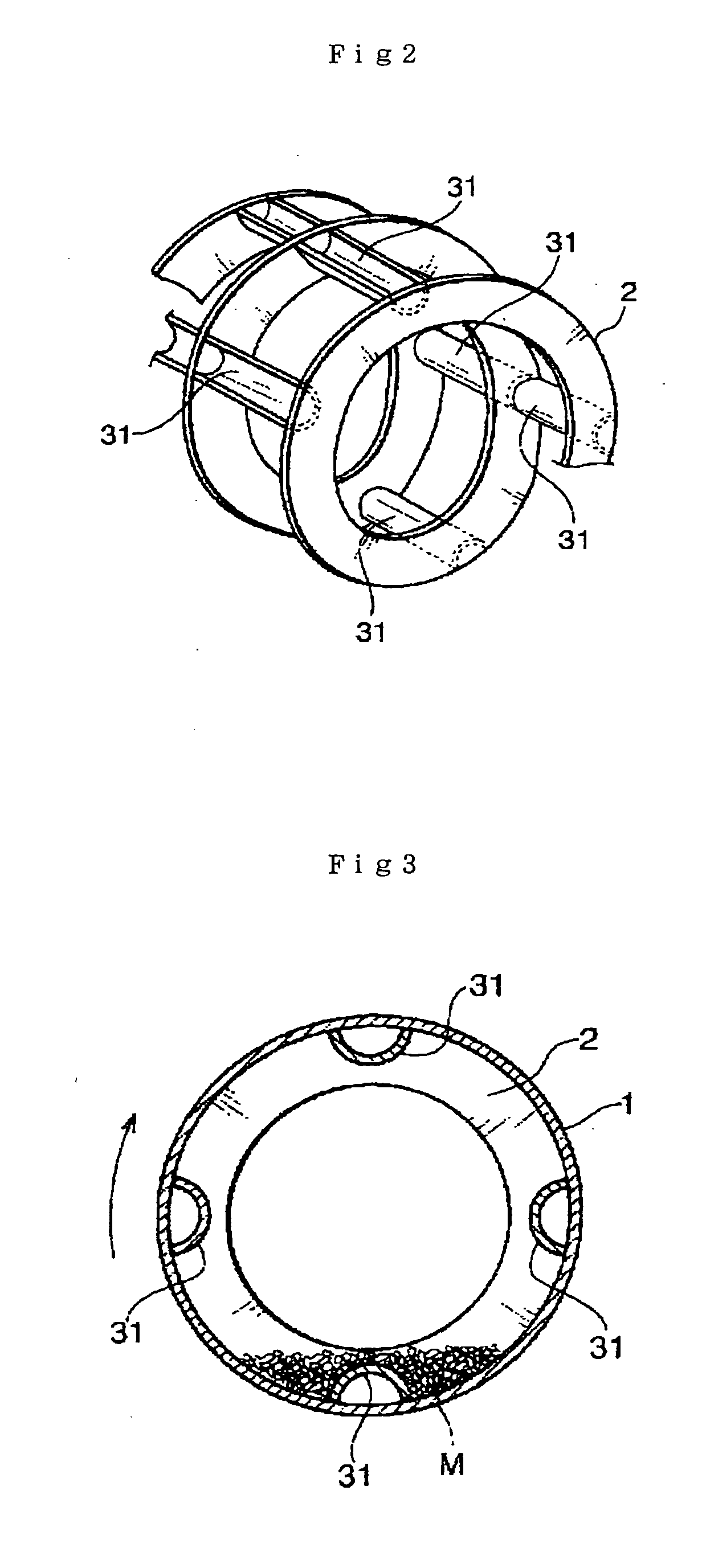Continuous Carbonization Processing by Internal Heat Type Self-Substained Combustion System
a technology of internal heat and combustion system, which is applied in the direction of combustion type, furnace, lighting and heating apparatus, etc., can solve the problems of high initial cost, poor heat efficiency of furnace, and difficult maintenance of furnace, so as to reduce initial cost, reduce fuel consumption, and reduce running cost
- Summary
- Abstract
- Description
- Claims
- Application Information
AI Technical Summary
Benefits of technology
Problems solved by technology
Method used
Image
Examples
Embodiment Construction
[0021] In FIG. 1, reference numeral 1 denotes a cylinder body having a length of about 10 m to 15 m and an inner diameter of about 30 to 80 cm, and made of a steel pipe. In this case, one cylinder body 1 is formed by connecting a plurality of tube bodies having a desired unit length to each other in an outer flange shaped joint.
[0022] Reference numeral 2 denotes a carrier wall provided in such a manner as to be formed in a spiral shape over an entire length of the cylinder body 1. A middle portion from an upstream of the spiral carrier wall 2 is provided with an agitating wall 3 in which a cross section in a direction cutting across the carrier wall 2 in this portion is formed in an approximately semicircular shape, an approximately triangular shape, an approximately trapezoidal shape or the like.
[0023] Reference numeral 4 denotes a heat insulating layer provided in an entire length outer surface of the cylinder body 1. A rotary kiln main body Kb is formed on the basis of the stru...
PUM
 Login to View More
Login to View More Abstract
Description
Claims
Application Information
 Login to View More
Login to View More - R&D
- Intellectual Property
- Life Sciences
- Materials
- Tech Scout
- Unparalleled Data Quality
- Higher Quality Content
- 60% Fewer Hallucinations
Browse by: Latest US Patents, China's latest patents, Technical Efficacy Thesaurus, Application Domain, Technology Topic, Popular Technical Reports.
© 2025 PatSnap. All rights reserved.Legal|Privacy policy|Modern Slavery Act Transparency Statement|Sitemap|About US| Contact US: help@patsnap.com



